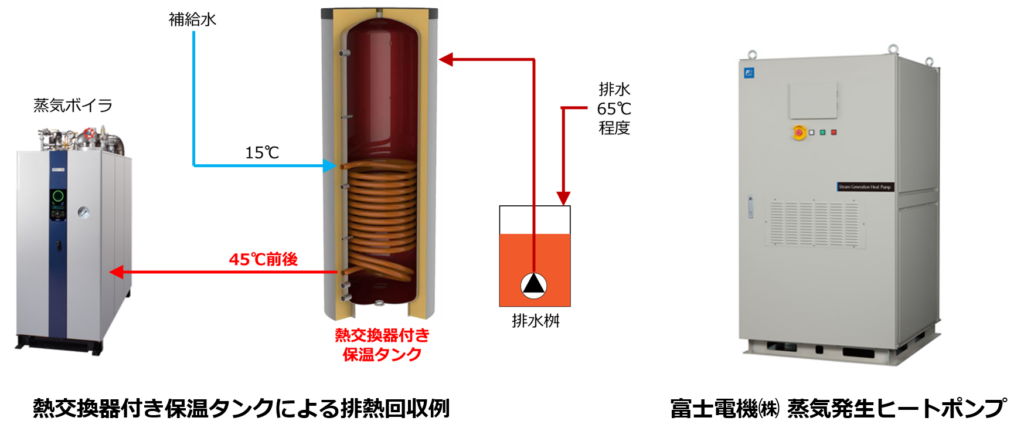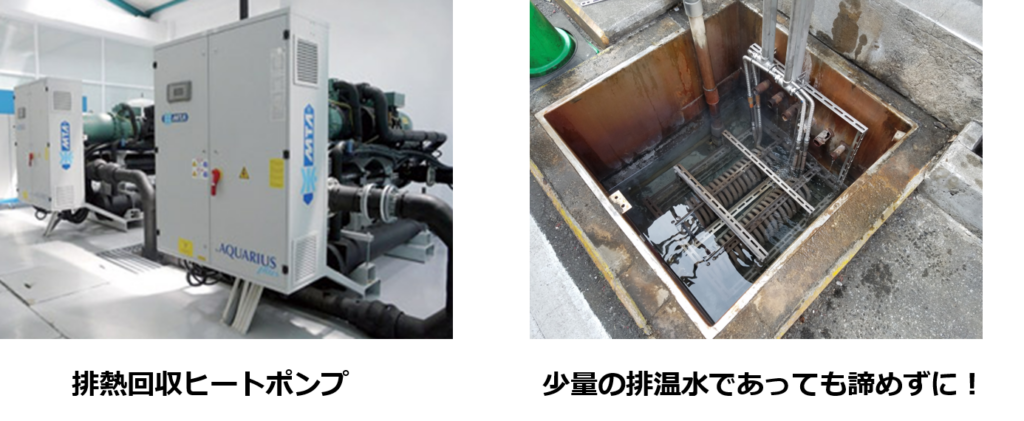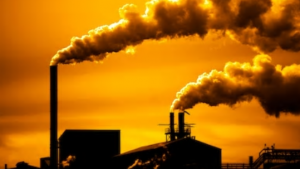[Renewable energy] Usable even at low temperatures! How to use waste hot water at different temperatures

Wastewater above 10℃ can be reused as a heat source.
Generally, when it comes to utilizing waste heat, many people may imagine a high temperature of 90°C or higher. Conversely, it is believed that a "lukewarm" temperature of 20-30°C cannot be effectively utilized.
However, by using heat pumps and heat exchangers appropriately, even low-temperature waste heat can be reused efficiently. In this column, we will explain how to reuse it according to temperature range.
Method for reusing waste hot water at 40℃ to 100℃ (high-temperature waste heat recovery)
There are two main options for reusing this temperature range as renewable energy.
①Reuse as steam heat source
If the above facilities are being used within the facility, it would be effective to recycle the heat there.
A simple method is to use a heat exchanger to heat the make-up water for the boiler.
Depending on the water quality, it is also possible to treat the wastewater and use it directly as make-up water. This allows for simultaneous recycling of heat and water, and is highly cost-effective. However, there are restrictions on water quality, so care must be taken.
Furthermore, in recent years, steam generation heat pumps that use hot water of about 40°C or higher as a heat source have been developed and can be used as an alternative to boilers.
2) Reuse as a heat source for heating and hot water
In this temperature range, it is possible to supply hot water for heating, etc. with just a heat exchanger and temperature control device. Since it can be operated with only the electricity cost of the pump, it is an extremely energy-efficient heating system.

Method for reusing hot wastewater at 10℃ to 40℃ (low-temperature waste heat recovery)
Heat pumps are useful for reusing waste hot water in this temperature range as renewable energy.
①Reuse as a supplementary heat source for steam
As with high-temperature waste heat recovery, waste heat recovery can be achieved by exchanging heat with make-up water or by using it directly as make-up water after water treatment.
If the waste water is at a lower temperature than the make-up water, it can be heated indirectly using a heat pump.
As long as the water temperature is around 30°C, it can operate more efficiently than an eco-cute, etc., and can reduce running costs compared to boilers, etc.
2) Reuse as a heat source for heating and cooling
By using it as a heat source for a water-cooled heat pump, it is possible to supply hot and cold water for heating and cooling.
While it is effective in energy saving under heating conditions, it is also capable of cooling. If the temperature is between 10 and 20 degrees Celsius, it can be operated efficiently for both heating and cooling.

Use of waste hot water above 100℃ (surplus steam, exhaust heat recovery, etc.)
We also propose methods for reusing high-temperature exhaust gas and excess steam as renewable energy.
It is used for heating purposes using a highly corrosion-resistant heat exchanger.
Depending on the conditions, it may be possible to use it as an air conditioning heat source, so please contact us for details.
Use of waste hot water below 10℃ (cold water waste heat recovery)
This isn't very common, but if you have cold wastewater, it can be an ideal source of air conditioning or cooling.
Our groundwater air conditioning system can be applied.
In either case, treating the heat source water is the key to utilizing renewable energy!
In all of the above cases of reusing waste hot water, the key is water treatment.
The quality of wastewater varies from facility to facility, and the equipment is exposed to harsh conditions due to pH, scale-causing substances, etc. Our water treatment technologies, including catalytic filters, can solve these problems.
Depending on the conditions, it may be possible to recycle not only heat but also water itself.
We hope that this column will help all readers design air conditioning that uses renewable energy, save energy, and reduce costs.


